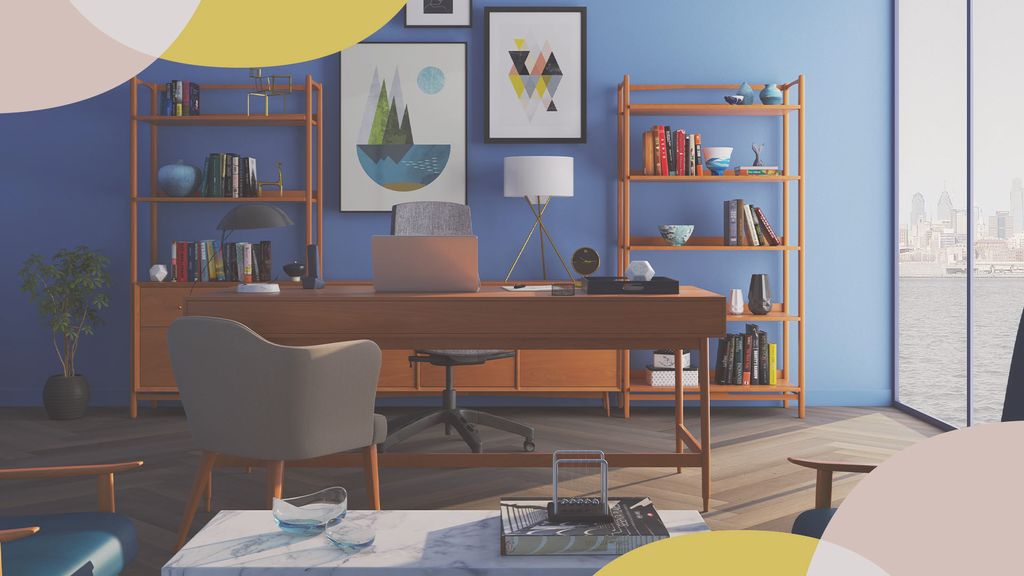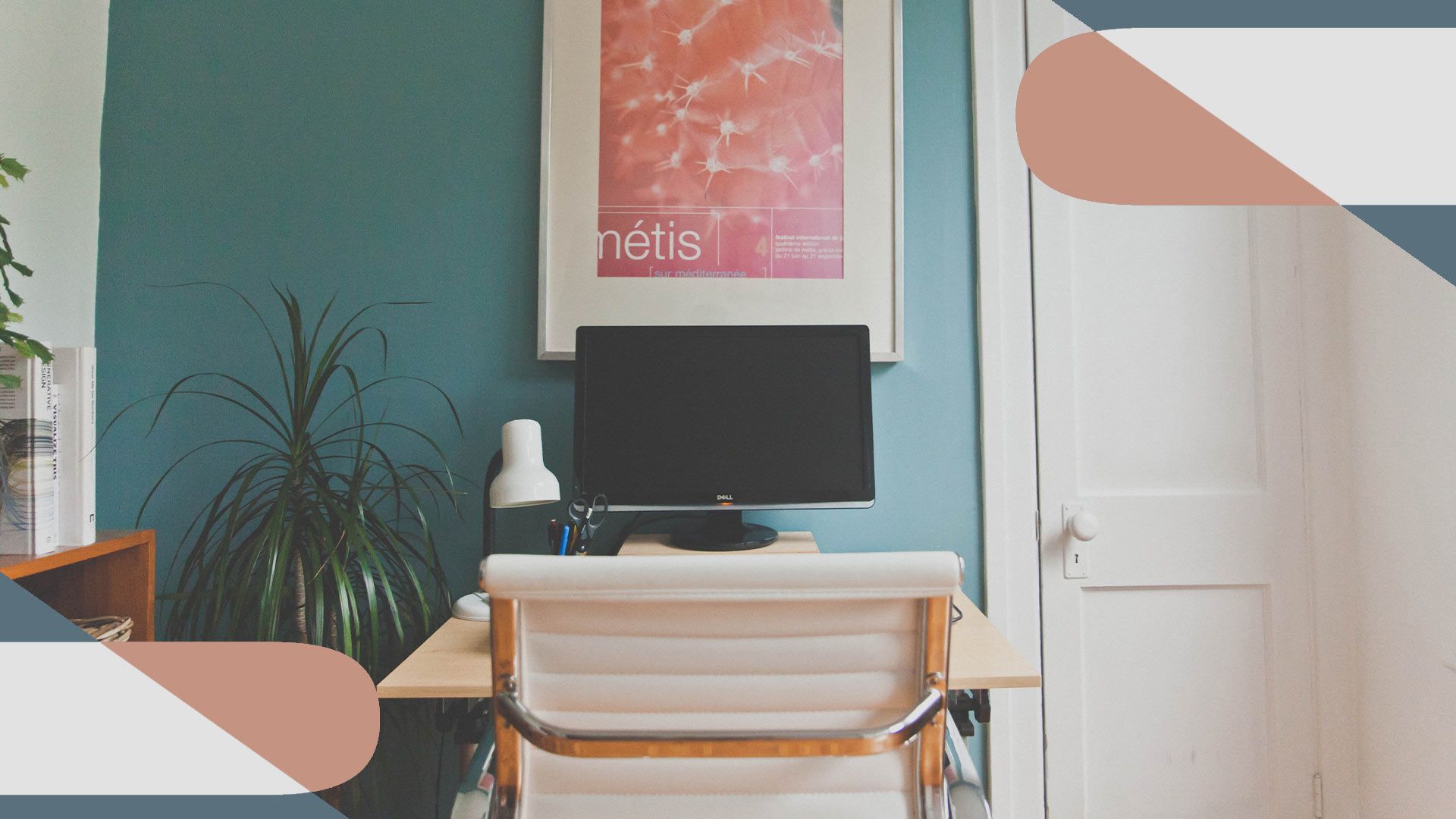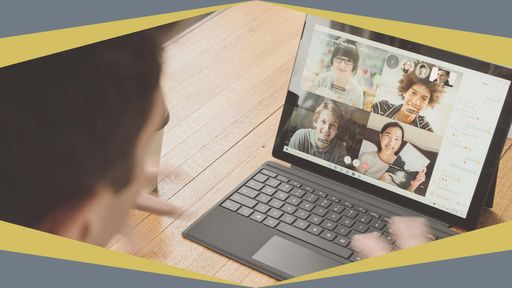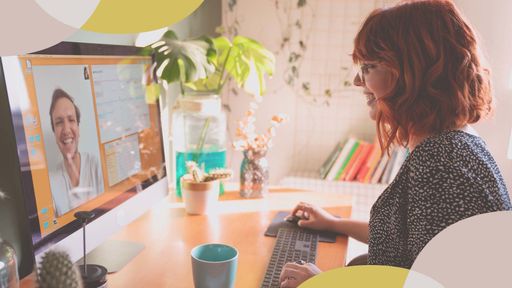Creating the Ideal Remote Work Space

by Nathan Allen

Even before the coronavirus pandemic, working from home was gaining momentum. Between 2005 and 2018, regular work at home had surged by 173 percent among US workers, according to Global Workplace Analytics data. These data also suggest that 56 percent of US employees have the ability to work remotely.
If you’re one of the millions of people currently working from home, you already know that having a practical yet inviting home office is crucial for productivity. Here are a few tips to help you set up an optimal work space, no matter where you are.
Find Your Space
For those with the luxury of “convertible” space in their homes, it’s helpful to separate work space from living space. Many workers new to working from home struggle with distractions—pets, kids, roommates—as well as unplugging from their laptop or smartphone at the end of the day. A designated work space helps manage both of those issues. Even if a dedicated office area is limited, you’ll want to find a quiet, cozy place where you can focus and feel relaxed.
Avoid places where people congregate (in the kitchen, near the TV) or busy traffic areas (hallways, by the bathroom). You may need to find some creative options, such as clearing out a corner in your garage or basement or bringing a small desk into a bedroom. This new working nook should have limited distractions and sufficient privacy for Zoom and phone calls.
Natural Light: Good for You and Your Productivity
Natural light boosts productivity and decreases drowsiness. It’s also far more flattering for Zoom calls. Though not everyone has this option, consider your desk’s proximity to natural light. Besides appealing to one’s vanity, researchers at Cornell University found, “controlled daylight” reduces workers’ eyestrain, blurred vision, and headaches by up to 84 percent.
Declutter Your Workspace
The impact of desk clutter on workplace productivity is an undisputed finding from productivity research. Paper clutter alone can account for 4.3 wasted hours each week for the average worker, and that’s not just time spent shuffling papers to find a missing page of notes. Princeton University neuroscientists have produced data showing that the more stuff that’s piled around you, the more likely your attention will be compromised. A clean work space can also help reduce your stress and anxiety.
For a lot of workers, even the thought of having to organize can set off a panic attack. But fear not—you don’t have to go Marie Kondo on us. There are plenty of simple ways to declutter your work space. You can reduce paper use (and stacks) by using apps like Evernote, or try Google Drive, Google Keep, or Microsoft OneNote. Having all your documents in one neat electronic “pile” is good for the environment—and your sanity. Another great paper-reducing app is DocuSign, which allows you to electronically sign papers, instead of printing, signing, and scanning. If actual paper is necessary, make sure it’s organized. Taking a few minutes at the end of each day to put papers in files or folders and clear your workspace can save hours in the long run.
At least once a week, set aside half an hour to go through all the items on your desk. You can take Kondo’s advice on this one: Ask yourself if each object is something you truly need for your work. If not, get rid of it. And don’t be afraid of a smaller desk. A less sprawling work space naturally forces you to declutter; a large desk tends to encourage clutter to build. If getting some storage bins or file holders helps, do that.
Find Your Color—and Greenery
The colors that surround you in your workspace can impact mood and productivity. Surround yourself with natural hues, like greens and blues, best for both mood and productivity. Yellow is often described as “optimistic.” White or beige can induce feelings of sadness or depression.

If you find yourself surrounded by white walls, add plants (cacti and succulents are low maintenance for the green thumb-challenged) or increase access to the outdoors. Even brief exposure to nature can help offset ennui. One study following 30 years of public-health research concluded that working in “green-certified” environments can boost cognitive function by 26 percent.
Check Your Ergonomics
Workers regularly spend eight or more hours per day sitting at their desk in front of a screen, which is not good for the body. Set up a work space to reduce potential long-term damage to the back, neck, and shoulders, and to prevent carpal tunnel syndrome.
A good chair and desk are especially important when you’re working long hours. According to the Mayo Clinic, your chair should have solid lumbar support and be at a height that keeps thighs parallel to the floor; your feet should rest solidly on the ground. Your arms also should be parallel to your thighs and in a straight line with your keyboard and mouse.
Your monitor or laptop screen should be at the same height at which your eyes naturally look forward; you shouldn’t strain your neck by looking up or down. If you want to get spendy, we recommend the Jarvis Bamboo Standing Desk for its adjustability and earth-friendly construction. Staples has a number of chairs that can help with posture; the Ardfield gets the job done at a reasonable price. If you’re working from a laptop, consider investing in a laptop stand or a second desktop monitor—both help reduce eyestrain. Amazon offers an Acer for around $100, a relatively inexpensive way to try this out.
Drink Enough Water
It may sound obvious, but make sure you’re hydrated. Even mild dehydration has been shown to decrease cognitive performance in young men; in women, concentration and mood are similarly degraded. A 32-ounce Nalgene reusable bottle works well as a reminder to continue sipping, and it keeps your water nice and cool.
Everyone is different, so it’s important to experiment with setting, light, and furniture to create the environment that appeals most you. Use our suggestions as a starting point, and then add your personal stamp to ensure that your work space feels like, well, home.









